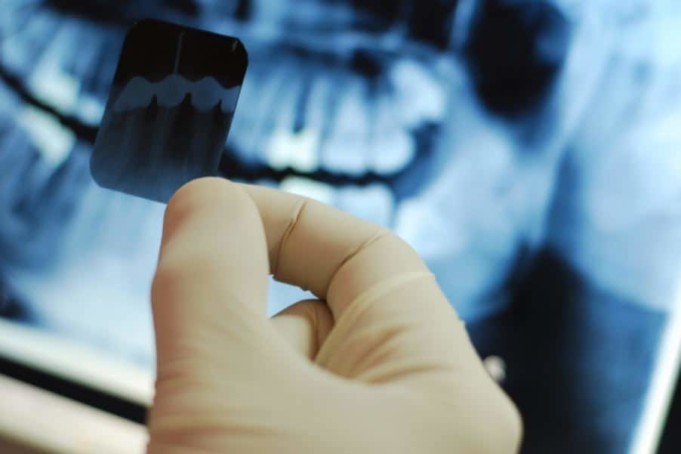A dental X-ray examination is helpful in identifying a number of teeth and gum related diseases that are not discernible in an oral examination. Such dental examinations help detect diseases early and prevent expensive treatments at a later stage.
Problems that an X-ray can detect
The main focus of a dental X-ray examination is to identify decay in the tooth and the adjoining gum. Such decays could occur in small areas between teeth, under an existing filling. In early stages, it could also be an abscess at the root of a tooth or between the gum and the teeth.
If you have been suffering from gum disease, then an X-ray could also reveal bone loss and the changes in the bone or the root canal due to an infection. It also helps detect cysts, tumors and other developmental abnormalities.
Lastly, an X-ray is also an important procedure to be conducted during the preparation of tooth implants, braces or dentures. In addition to this, a dental X-ray in children can also help monitor the teeth growth to see if there is adequate space in the mouth for all the incoming teeth, and also to know if all the primary teeth are lost in time for the permanent teeth to take its place.
Who performs an X-ray Procedure?
A dental X-ray is a relatively safe procedure and is conducted by a trained dental assistant at the dentist’s office. You may be asked to visit a dedicated radiography lab if your dentist does not have the necessary equipment to conduct an X-ray test. It is however important to know that women who are pregnant or believe they are pregnant should refrain from getting an X-ray procedure done since the radiations may affect the developing fetus.
Types of dental X-ray procedures
There are six main types of X-ray procedures involving your teeth. They are bitewing, occlusal, palatal, panoramic, periapical and extraoral. In a bitewing procedure, the dentist may ask you to bite down on a special piece of paper. This helps them look at how well the crowns of your teeth match and thus identify any cavities in the surrounding dental regions.
An occlusal X-ray is conducted to detect abnormalities in the dental anatomy of the palate or the floor of the mouth. It is performed on a closed jaw. A palatal X-ray, on the other hand captures all your teeth in one shot. A panoramic X-ray serves a similar purpose but for this, the X-ray machine rotates around your head to capture an all-round view of your dental cavity. This procedure is performed to check your wisdom teeth or in the preparation of dental implants.
A periapical procedure focuses on two separate teeth from the root to the crown. But if your dentist suspects problems in the jaw, and not necessarily in the gum or teeth, they may go for an extraoral dental X-ray procedure.
Cost of a dental X-ray exam
The cost of a dental X-ray procedure depends on the country and even the city or suburb that your dentist is located in. In addition to this, the type of radiograph that is necessary for your unique condition can also influence the cost. A bitewing procedure is different from a panoramic and are hence priced differently.
In the US, a single radiograph image may cost between $12 and $20 each. Dentists often require multiple X-ray images to accurately determine dental health. It is not uncommon to take as many as 15-18 images during a panoramic or such exhaustive radiographing procedure and the costs in this case can be anywhere between $100 to $150.
Risks associated with dental X-rays
X-rays are relatively safe procedure when performed by a trained operator. However, some studies in recent times have found a connection between getting frequent dental X-rays and a commonly diagnosed non-malignant meningioma brain tumors.
While meningioma is non-malignant, the tumors can grow big enough to cause issues such as vision or hearing loss, frequent headaches, memory loss and even seizures. However, it is important to remember that this should not stop you from visiting the dentist for an X-ray. As long as you undergo an X-ray procedure once every two or three years, there should be no associated health risk.












